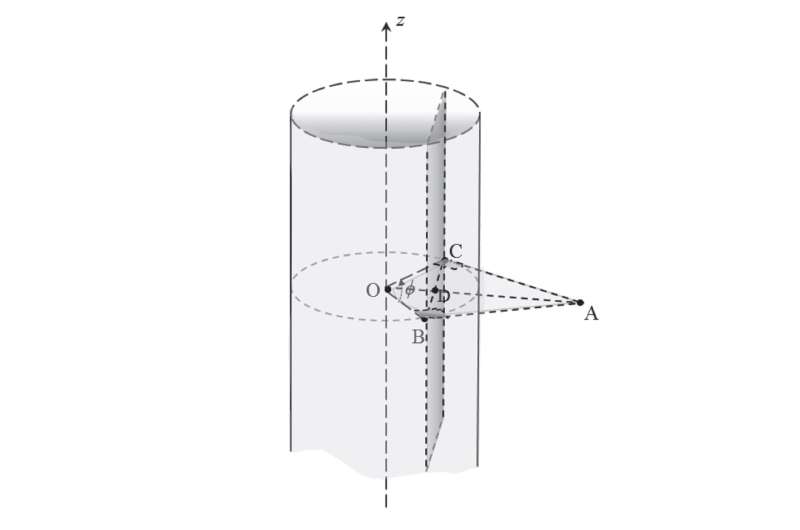May 23, 2017 feature
New blackbody force depends on spacetime geometry and topology

(Phys.org)—In 2013, a group of physicists from Austria proposed the existence of a new and unusual force called the "blackbody force." Blackbodies—objects that absorb all incoming light and therefore appear black at room temperature—have long been known to emit blackbody radiation, which repels small nearby objects such as atoms and molecules. But the physicists showed that blackbodies theoretically also exert an attractive force on these objects. They called this force the "blackbody force," and showed that it can be stronger than blackbody radiation, and—for very small particles—even stronger than gravity.
Now in a new study published in EPL, a different team of physicists, C.R. Muniz et al., at Ceará State University and the Federal University of Ceará, Brazil, have theoretically demonstrated that the blackbody force depends not only on the geometry of the bodies themselves, but also on both the surrounding spacetime geometry and topology. In some cases, accounting for these latter factors significantly increases the strength of the blackbody force. The results have implications for a variety of astrophysics scenarios, such as planet and star formation, and possibly lab-based experiments.
"This work puts the blackbody force discovered in 2013 in a wider context, which involves strong gravitational sources and exotic objects like cosmic strings as well as the more prosaic ones found in condensed matter," Muniz told Phys.org.
As the scientists showed in 2013, the blackbody force arises when the heat absorbed by a blackbody causes the blackbody to emit electromagnetic waves that shift the atomic energy levels of nearby atoms and molecules. These shifts cause the atoms and molecules to be attracted to the blackbodies due to their high radiation intensity, pulling them together.
In the new study, the physicists investigated spherical blackbodies and cylindrical blackbodies, and showed how the topology and the local curvature of the spacetime influences their blackbody forces. They showed that ultradense spherical blackbodies like a neutron star (around which spacetime is highly curved) generate a stronger blackbody force due to the curvature compared to blackbodies in flat spacetime. They explain that this is because gravity modifies both the temperature of the blackbody and the solid angle at which the nearby atoms and molecules "see" the blackbody. On the other hand, a less dense blackbody such as our Sun (where spacetime is less curved) generates a blackbody force that is very similar to that of the flat case.
The researchers then considered the case of a global monopole, a spherical object that modifies the global properties of space, and found a different kind of influence. Whereas for other spherical blackbodies, the spacetime influence is gravitational and decreases with the distance to the blackbody, for the global monopole the influence is of a topological nature, decreasing with the distance but eventually reaching a constant value.
Finally, when investigating the blackbody force of cylindrical blackbodies around which spacetime is locally flat, the scientists found no gravitational correction to the temperature, but, surprisingly, an effect on the angles with nearby objects. And when a cylindrical blackbody becomes infinitely thin, turning into a hypothetical cosmic string, the blackbody force vanishes completely. Overall, the scientists expect that these newly discovered geometrical and topological influences on the blackbody force will help elucidate the role of this unusual force on objects throughout the universe.
"We think that the intensification of the blackbody force due to the ultradense sources can influence in a detectable way the phenomena associated with them, such as the emission of very energetic particles, and the formation of accretion discs around black holes," Muniz said. "That force can also help to detect the Hawking radiation emitted by these latter objects, since we know that such radiation obeys the blackbody spectrum. In the future, we would like to investigate the behavior of that force in other spacetimes, as well as the influence of extra dimensions on it."
More information: C. R. Muniz et al. "Dependence of the black-body force on spacetime geometry and topology." EPL. DOI: 10.1209/0295-5075/117/60001
Journal information: Europhysics Letters (EPL)
© 2017 Phys.org




















